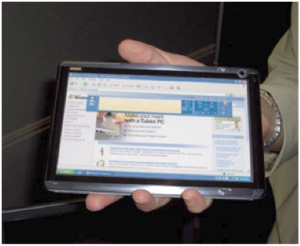New Trends in Mobile Commerce And Why You Need to Pay Attention by Megan Totka
 It’s official: There are more Internet-connected devices in the United States than there are people. Around 311.5 million Americans are using a combined 425 million gadgets. And while this figure does include personal laptop and desktop computers, mobile connectivity is poised to replace the PC—there are 113 million smartphone users, and 54.8 million tablet users.
It’s official: There are more Internet-connected devices in the United States than there are people. Around 311.5 million Americans are using a combined 425 million gadgets. And while this figure does include personal laptop and desktop computers, mobile connectivity is poised to replace the PC—there are 113 million smartphone users, and 54.8 million tablet users.
Now more than ever, it’s vital for businesses to keep an eye on the mobile market, a rapidly growing segment of e-commerce. Total mobile commerce sales for the United States, at $3 billion in 2010, rose to $10 billion for 2012 and are expected to reach $31 billion by 2016.
How can your business cash in on mobile commerce? Here are four trends to watch and act on in the near future.
Tablets are Hot for Commerce
While smartphones and tablets are both used for mobile commerce, tablet users are driving the trends for mobile shopping. Trend-tracking firm comScore reported that the acceleration in mobile spending coincides with the widespread adoption of tablets in 2011.
Various studies show that tablet users love and use their devices
more frequently:
- In a 2011 Google study, 43 percent of tablet users spent more time with their tablets than on PCs
- The same study found that 33 percent use tablets more often than they watch television
- Data from Forrester, Gartner, and Pew Internet Research, reported in this infographic from digital ad agency Vertic, finds that 60 percent of tablet users shop from their tablets
- The same sources report that tablet users typically spend 10 to 20 percent more on their mobile purchases, with a 33 to 66 percent increase in conversion rates over PC users
Video is (Still) King
With the increasing use of mobile devices for shopping, video content is more attractive than ever to consumers, who can—and do—watch videos anywhere. Adobe’s U.S. Digital Video Benchmark study found that mobile video consumption increased more than 10 percent during the fourth quarter of 2012.
Research has already proven that video content offers a significant boost in conversion rates. This is especially true for tablet users, according to Adobe’s findings—they not only consume more video content, but also spend more money on mobile commerce purchases.
Men Love Mobile Shopping
If you’re targeting a female demographic with your Internet marketing strategies, you may want to consider a shift for your mobile audience. The latest Global TGI survey from Kantar Media finds that in the United States, 13.3 percent of women are interested in mobile commerce purchasing, compared to 15.9 percent of men.
Smartphones are Replacing Wallets
When debit cards debuted in the U.S. market, it was the ultimate in convenience. No more carrying cash or checkbooks—you could use your card to make purchases, and grab a little spending money from any ATM, without going into debt.
Now, consumers can pay not only for mobile purchases, but also for physical transactions with their smartphones. More retail stores are accepting payments through apps like PayPal and Google Wallet. Mobile transactions currently total $240 billion annually, and Juniper Research projects those totals to surpass $670 billion by 2015.
Mobile commerce can only grow from here. Is your business part of the mobile revolution?
(Photo
Source)
Megan Totka is
the Chief Editor for ChamberofCommerce.com. She
specializes on the topic of small business tips and resources.
ChamberofCommerce.com helps small businesses grow their business on the web and
facilitates connectivity between local businesses and more than 7,000 Chambers
of Commerce worldwide.

This Post Has 0 Comments